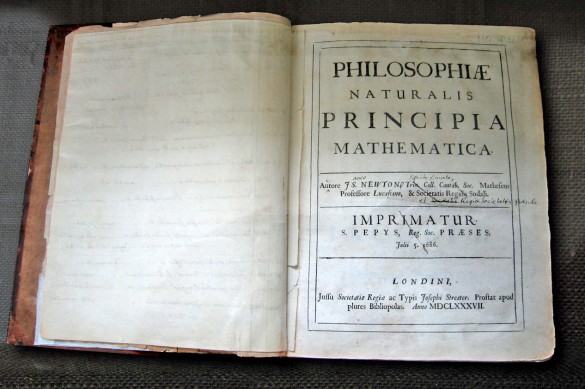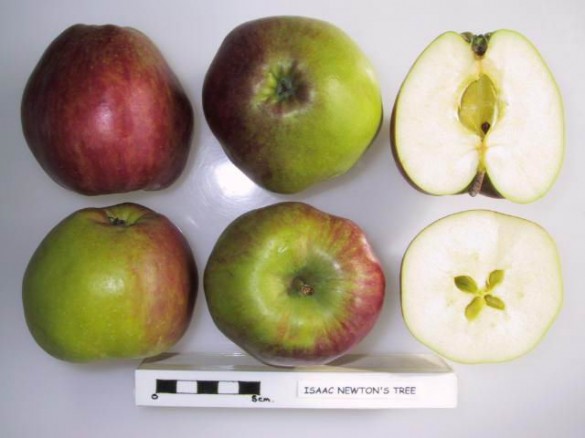
Today marks the 324th anniversary of the publishing of Sir Isaac Newton’s book Philosophiæ Naturalis Principia Mathematica (Mathematical Principles of Natural Philosophy). Principia is a set of three volumes and was the third time that books by Newton had been published. In Principia, Newton lays out his three laws of motion and his law of universal gravitation.
Newton’s Laws of Motion:
First law: An object at rest stays at rest and an object in motion stays in motion with the same speed and in the same direction unless acted upon by an unbalanced force.
Second law: The acceleration of an object as produced by a net force is directly proportional to the magnitude of the net force, in the same direction as the net force, and inversely proportional to the mass of the object.
Third law: For every action, there is an equal and opposite reaction.
Newton’s Law of Universal Gravitation:
Every point mass attracts every single other point mass by a force pointing along the line intersecting both points. The force is proportional to the product of the two masses and inversely proportional to the square of the distance between them.
Principia and the laws stated within it revolutionized man’s understanding of physics and formed the basis for modern classical mechanics (as opposed to quantum mechanics). In 1747, French mathematical physicist Alexis Clairaut wrote, “The famous book of mathematical Principles of natural Philosophy marked the epoch of a great revolution in physics. The method followed by its illustrious author Sir Newton spread the light of mathematics on a science which up to then had remained in the darkness of conjectures and hypotheses.”1 We owe much to Sir Isaac Newton.
As an interesting sidenote, legend has it that Sir Isaac Newton came up with his law of universal gravitation after either being hit on the head or simply observing an apple falling to the ground. How much of that you want to believe is up to you, but there is much evidence that this did in fact occur and that the original tree and many of its descendants still exist. From the National Fruit Collection website: “Originated from a tree growing in Isaac Newton’s garden at Woolsthorpe Manor, near Grantham, Lincs in 1660. It appears identical to Flower of Kent. Fruits have soft, coarse-textured flesh with a subacid flavour.”2

Footnotes
| Tweet |
|
|
|




